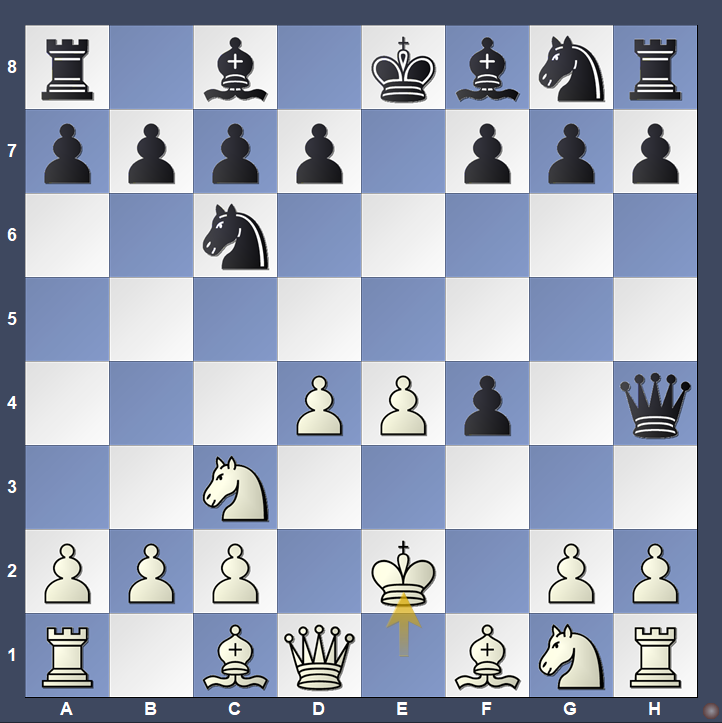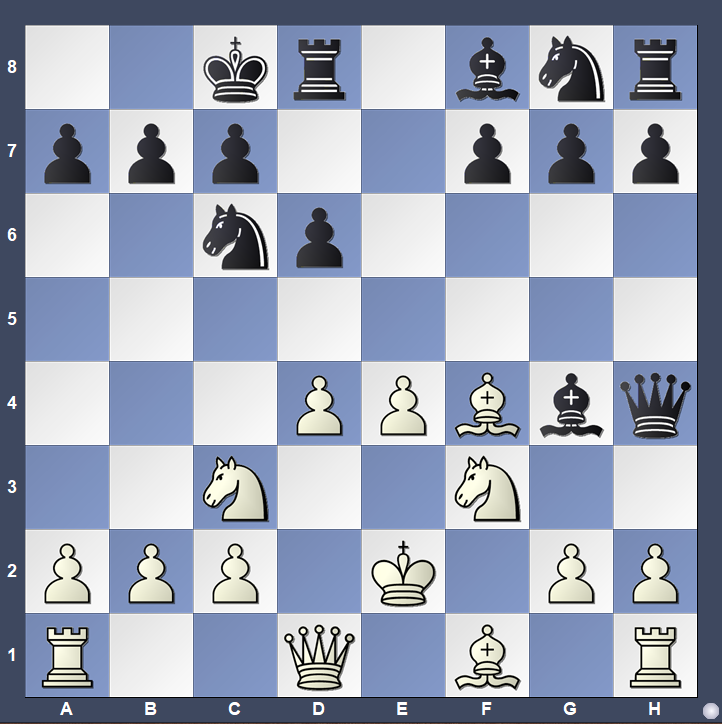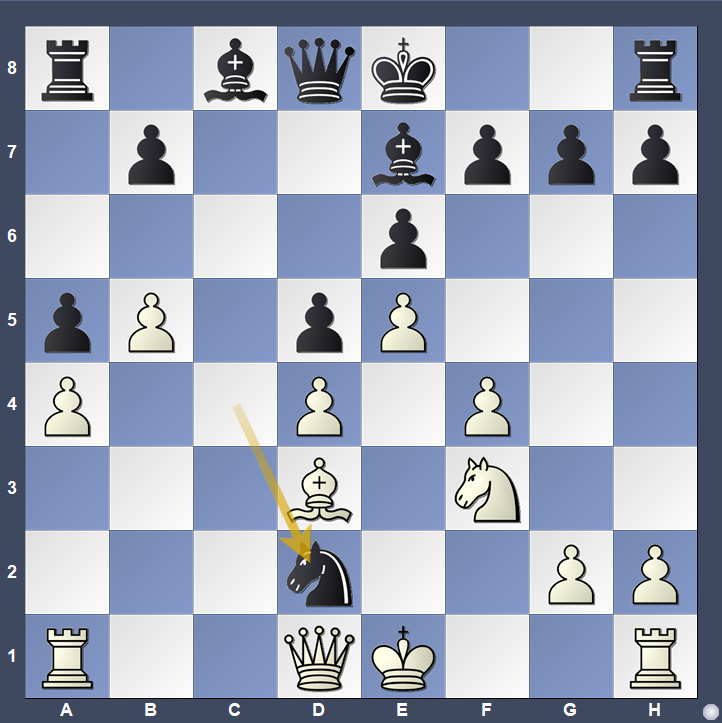https://www.youtube.com/embed/AhW9Gy7hzgU
4. Defense is Vital To understand why Steinitz’s approach to the game felt revolutionary, let’s see how one of his strongest contemporaries, Adolf Andersen, described the champions’ style: “Kolisch is a highwayman and points the pistol at your breast. Steinitz is a pick-pocket; he steals a pawn and wins a game with it.” This style back then was considered to be intrinsic for cowards, nowadays is the most effective way of playing. Steinitz proved with his games, that it is often better to defend than to attack. You can learn Steinitz’s 10 Fundamental Chess Principles here. 5. How to Attack Despite being known as an advocate of defensive measures, Wilhelm Steinitz initially was a fierce attacker. On his way to the World Champion title, Steinitz mostly played sparkling aggressive chess. He could combine his positional understanding and attacking intentions to destroy the defenses of his opponents. To this day, these games remain great examples to learn from. 6. The King is a Fighting Piece That is one of the concepts that only Steinitz is associated with. He believed the king was a strong piece not only in the endgames. He showed that it can defend itself well and didn’t need to always hide. For example, Steinitz consistently played the following line of the Vienna Game with great results: 1.e4 e5 2.Nc3 Nc6 3.f4 exf4 4.d4 Qh4+ 5.Ke2.
 White’s king seems vulnerable, but Black is undeveloped and has no control over the center. White will also gain time by attacking Black’s queen with Nf3. One of Steinitz’s games reached the following position: Wilhelm Steinitz – Louis Paulsen [C25] Baden-Baden GER (13), 30.07.1870 1.e4 e5 2.Nc3 Nc6 3.f4 exf4 4.d4 Qh4+ 5.Ke2 d6 6.Nf3 Bg4 7.Bxf4 0–0–0
White’s king seems vulnerable, but Black is undeveloped and has no control over the center. White will also gain time by attacking Black’s queen with Nf3. One of Steinitz’s games reached the following position: Wilhelm Steinitz – Louis Paulsen [C25] Baden-Baden GER (13), 30.07.1870 1.e4 e5 2.Nc3 Nc6 3.f4 exf4 4.d4 Qh4+ 5.Ke2 d6 6.Nf3 Bg4 7.Bxf4 0–0–0  Can you believe that in this position, the first World Champion played 8.Ke3? Not only did he, but also the modern engines approve it! He went on to win an exciting game. A similar attitude towards the king was seen in one of the games of the AlphaZero chess engine against Stockfish. AlphaZero (Computer) – Stockfish (Computer) [C11] AlphaZero – Stockfish, London ENG, 04.12.2017
Can you believe that in this position, the first World Champion played 8.Ke3? Not only did he, but also the modern engines approve it! He went on to win an exciting game. A similar attitude towards the king was seen in one of the games of the AlphaZero chess engine against Stockfish. AlphaZero (Computer) – Stockfish (Computer) [C11] AlphaZero – Stockfish, London ENG, 04.12.2017  Black just captured a bishop on d2 with the knight. Taking back with the queen loses to …Bb4. But 16.Nxd2, followed by kingside castling seemed like a viable option. Nevertheless, the neural-network-based engine played 16.Kxd2! Bd7 17.Ke3! The board is full of pieces, but the king feels fine in the center. Moreover, after 17…b6, White continued aggressively with 18.g4. Steinitz would have been proud! You can see how this brilliant game continued below. It actually started with the Steinitz Variation of the French Defense: var viewer = new CHESS.PgnViewer({ pgn_uri: 'pgngames/general/10-things-to-learn-from-steinitz/AlphaZero.pgn', piece_set: '/canvaschess/img/pieces/merida', show_tags: true }); 7. Opening Choices In Steinitz’s opening repertoire, you can find a lot of aggressive ideas as well as many safe and even passive defenses. That is not surprising: the first World Champion was good at both attacking and positional chess. That allowed him to adjust to his opponents better. It is known that he was thorough in preparation. He could analyze his future opponents’ games and prepare some opening ideas against them. Sometimes, such ideas would wait to be played for years. 8. Calculation The games of William Steinitz can be used for training calculation skills. His famous game against Curt von Bardeleben (Hastings, 1895) featured a brilliant combination. The main variation of the sacrifice from the game is about 13 moves long! We will not post this beauty here so that curious readers could find this game and challenge their calculation skills. That’s going to be great exercise! 9. Keep Working on Chess Even after becoming the World Champion, Steinitz kept working on his chess. After every tournament, he analyzed the games of his rivals, trying to find not only their weaknesses but something new to learn. This way he kept improving his understanding of chess and, at some point, even switched to a positional way of playing. 10. Experimenting Many things that we take for granted in chess today were not yet discovered in Steinitz’s times. One had to be open to new ideas and ways of approaching the game to be able to reassess the old dogmas. The first World Champion had a curious mind and kept experimenting. Modern players can learn not only from their games but also from their attitude and constant search for the truth on the board. https://thechessworld.com/store/product/learn-from-wilhelm-steinitz-with-im-boroljub-zlatanovic/ The post 10 Things to Learn from William Steinitz appeared first on TheChessWorld.
Black just captured a bishop on d2 with the knight. Taking back with the queen loses to …Bb4. But 16.Nxd2, followed by kingside castling seemed like a viable option. Nevertheless, the neural-network-based engine played 16.Kxd2! Bd7 17.Ke3! The board is full of pieces, but the king feels fine in the center. Moreover, after 17…b6, White continued aggressively with 18.g4. Steinitz would have been proud! You can see how this brilliant game continued below. It actually started with the Steinitz Variation of the French Defense: var viewer = new CHESS.PgnViewer({ pgn_uri: 'pgngames/general/10-things-to-learn-from-steinitz/AlphaZero.pgn', piece_set: '/canvaschess/img/pieces/merida', show_tags: true }); 7. Opening Choices In Steinitz’s opening repertoire, you can find a lot of aggressive ideas as well as many safe and even passive defenses. That is not surprising: the first World Champion was good at both attacking and positional chess. That allowed him to adjust to his opponents better. It is known that he was thorough in preparation. He could analyze his future opponents’ games and prepare some opening ideas against them. Sometimes, such ideas would wait to be played for years. 8. Calculation The games of William Steinitz can be used for training calculation skills. His famous game against Curt von Bardeleben (Hastings, 1895) featured a brilliant combination. The main variation of the sacrifice from the game is about 13 moves long! We will not post this beauty here so that curious readers could find this game and challenge their calculation skills. That’s going to be great exercise! 9. Keep Working on Chess Even after becoming the World Champion, Steinitz kept working on his chess. After every tournament, he analyzed the games of his rivals, trying to find not only their weaknesses but something new to learn. This way he kept improving his understanding of chess and, at some point, even switched to a positional way of playing. 10. Experimenting Many things that we take for granted in chess today were not yet discovered in Steinitz’s times. One had to be open to new ideas and ways of approaching the game to be able to reassess the old dogmas. The first World Champion had a curious mind and kept experimenting. Modern players can learn not only from their games but also from their attitude and constant search for the truth on the board. https://thechessworld.com/store/product/learn-from-wilhelm-steinitz-with-im-boroljub-zlatanovic/ The post 10 Things to Learn from William Steinitz appeared first on TheChessWorld. Source: https://thechessworld.com/articles/gene ... -steinitz/
